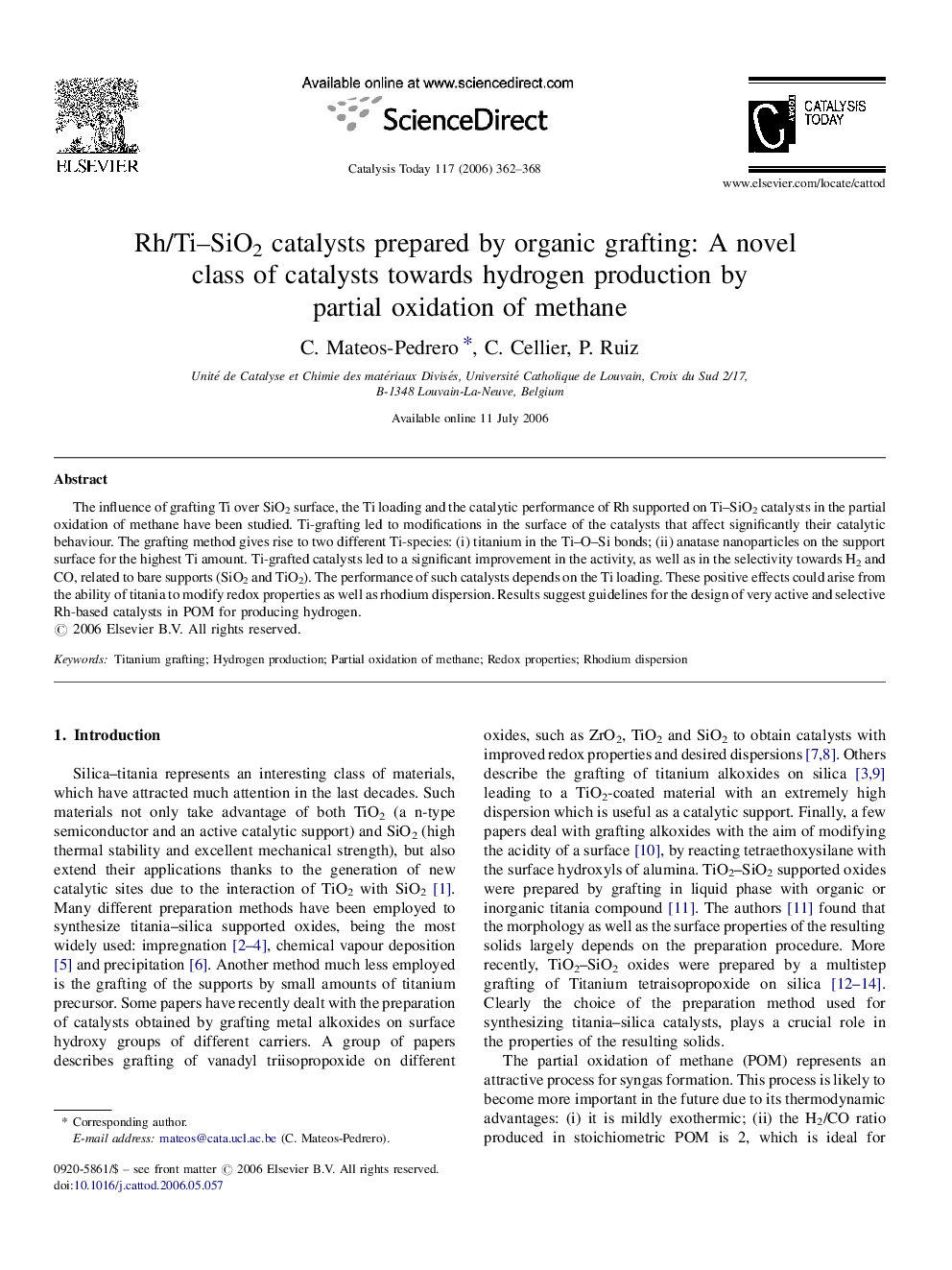| Article ID | Journal | Published Year | Pages | File Type |
|---|---|---|---|---|
| 58103 | Catalysis Today | 2006 | 7 Pages |
The influence of grafting Ti over SiO2 surface, the Ti loading and the catalytic performance of Rh supported on Ti–SiO2 catalysts in the partial oxidation of methane have been studied. Ti-grafting led to modifications in the surface of the catalysts that affect significantly their catalytic behaviour. The grafting method gives rise to two different Ti-species: (i) titanium in the Ti–O–Si bonds; (ii) anatase nanoparticles on the support surface for the highest Ti amount. Ti-grafted catalysts led to a significant improvement in the activity, as well as in the selectivity towards H2 and CO, related to bare supports (SiO2 and TiO2). The performance of such catalysts depends on the Ti loading. These positive effects could arise from the ability of titania to modify redox properties as well as rhodium dispersion. Results suggest guidelines for the design of very active and selective Rh-based catalysts in POM for producing hydrogen.
